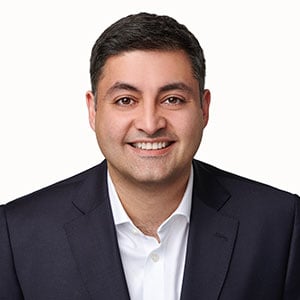Last month, Commonfund hosted its third Commonfund Convenes event dedicated to advancement of investment knowledge for institutionally-related foundations (IRFs). The latest workshop focused specifically on investing in private markets—an increasingly important area for IRFs seeking to enhance long-term portfolio performance. This session followed two others previously held IRF sessions that focused on the levels and types of fees related to IRFs’ operations and advancement, and endowment spending data and policy. During the discussion, Commonfund shared data on private market investment trends from the 2024 NACUBO-Commonfund Study of Endowments (NCSE), covering the July 1, 2023 to June 30, 2024 fiscal year (FY2024).
1. IRFs with larger endowments have higher allocations to alternative asset classes relative to institutions with smaller endowments.
Based on FY2024 NCSE data, IRFs with less than $50 million in endowment assets allocated 2.3 percent of their portfolio to private equity, including venture capital, compared with 22.6 percent for those with assets between $501 million and $1 billion, on average.
2. NCSE data from the past 10 years show that most IRF size cohorts have increased their allocations to private equity, including venture capital, and decreased allocations to marketable alternatives (hedge funds, absolute return, market neutral, long/short, 130/30, event-driven, and derivatives), on average.
The largest relative increase to private equity occurred among the largest IRFs with the share growing by more than 150 percent. The largest relative decrease to marketable alternatives allocations occurred among IRFs with assets between $51 and $100 million.
3. Current allocations to private illiquid assets (private equity, venture capital, private debt, and private real assets) among all size cohorts are lower than their reported target allocations, on average.
This data suggests that growing an illiquid portfolio takes time, resources and consideration. Following the presentation of this data, working group discussions were mainly related to themes of willingness, need, and ability for illiquid investments, and are summarized below.
Willingness: The lack of general education among boards and committees about the role of illiquid investments in portfolios is one key reason that committees may be hesitant to advance these allocations. Participants noted that newer committee members and those with finance backgrounds are often more receptive to and familiar with illiquid investments.
Need: The main drivers of allocating to private markets are generated by the need to meet spending, inflation, admin fee, and growth requirements (total return targets could be upwards of 4-5% spend + inflation + 1.5% admin fee + a growth component). To meet this requirement, institutions with perpetual time horizons tend to lean into illiquid investments to capture the potential excess return these strategies can offer. Participating institutions with more mature programs shared that they have increased their allocations to illiquid investments over time.
Ability: An institution’s ability to invest in private markets typically reflects its short-term liquidity needs, investment time horizon, and internal expertise. Some institutions are more concerned about their short-term liquidity needs and the changing policy environment that may add pressure to the endowment.
Most institutions recognize that their investment horizon is effectively infinite, allowing them to assume a degree of illiquidity in pursuit of higher returns. Whether the institution is new to private markets or has a well-established portfolio, they have typically built their allocations thoughtfully over time, with the goal of having vintage year diversification and enabling their private markets portfolio to be “self-funding” (a self-funding private markets portfolio typically refers to a portfolio that eventually generates distributions which exceed capital calls).
Additionally, in terms of expertise, participants expressed concerns about their ability to underwrite and access the best managers, especially if manager selection is performed within the organization. We have found the difficulty in access and due diligence is especially prevalent for smaller funds and niche managers with specialized strategies, who have typically demonstrated consistent and proven long-term performance and often have limited capacity for new investors.
Our goal for these convenings is to provide a platform for IRFs to share ideas and gain new insights into key governance practices that can be implemented at each participant’s respective organization. We trust that these meetings serve as the basis for more informed discussions among boards, committee members and investment managers over the coming year.
Further Resources:
Insights on Private Equity and Market Trends
Private Equity Trends in 2024: Year in Review and Looking Forward
Mind the Gap: The Strategic Risk of Skipping a Vintage in Private Equity




